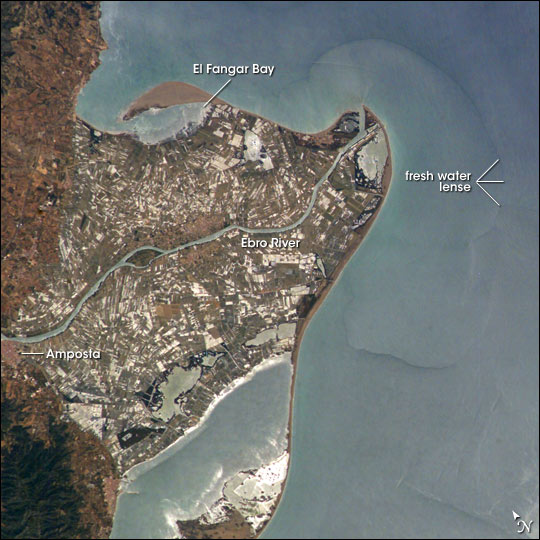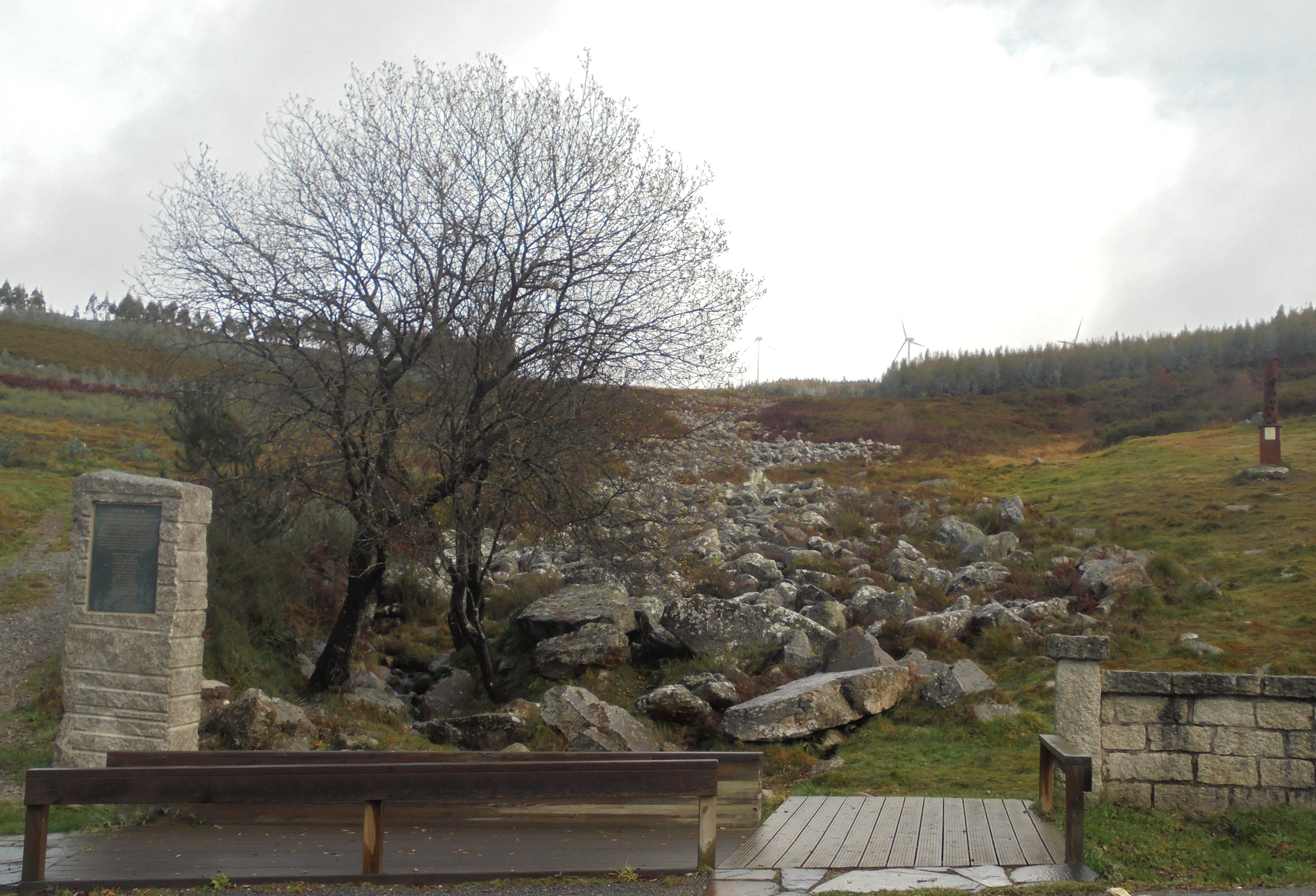|
Cantabrian Mountains
The Cantabrian Mountains or Cantabrian Range () are one of the main systems of mountain ranges in Spain. They stretch for over 300 km (180 miles) across northern Spain, from the western limit of the Pyrenees to the Galician Massif in Galicia, along the coast of the Cantabrian Sea. Their easternmost end meets the Sistema Ibérico. These mountains are a distinct physiographic province of the larger Alpine System physiographic division. The Cantabrian Mountains offer a wide range of trails for hiking, as well as many challenging climbing routes. Skiing is possible in the ski resorts of Alto Campoo, Valgrande-Pajares, Fuentes de Invierno, San Isidro, Leitariegos and Manzaneda. Geography The Cantabrian Mountains stretch east–west, nearly parallel to the Cantabrian Sea, as far as the Pass of Leitariegos, also extending south between León and Galicia. The range's western boundary is marked by the valley of the river Minho (), by the lower Sil, which flows into ... [...More Info...] [...Related Items...] OR: [Wikipedia] [Google] [Baidu] |
Cantabri
The Cantabri (, ''Kantabroi'') or Ancient Cantabrians were a pre-Roman people and large tribal federation that lived in the northern coastal region of ancient Iberia in the second half of the first millennium BC. These peoples and their territories were incorporated into the Roman Province of Hispania Tarraconensis in 19 BC, following the Cantabrian Wars. Name ' is a Latinized form of a local name, presumably meaning "Highlanders" and deriving from the reconstructed root *''cant''- ("mountain") in Ancient Ligurian. During the High and Late Middle Ages, as well as Modern Period, the name refers usually to the Basques. Geography Cantabria, the land of the Cantabri, originally comprised much of the highlands of the northern Spanish Atlantic coast, including the whole of modern Cantabria province, eastern Asturias, nearby mountainous regions of Castile and León, the northern of province of Palencia and province of Burgos and northeast of province of León. Following the R ... [...More Info...] [...Related Items...] OR: [Wikipedia] [Google] [Baidu] |
Elevation
The elevation of a geographic location (geography), ''location'' is its height above or below a fixed reference point, most commonly a reference geoid, a mathematical model of the Earth's sea level as an equipotential gravitational equipotential surface, surface (see Geodetic datum#Vertical datum, Geodetic datum § Vertical datum). The term ''elevation'' is mainly used when referring to points on the Earth's surface, while ''altitude'' or ''geopotential height'' is used for points above the surface, such as an aircraft in flight or a spacecraft in orbit, and ''three-dimensional space, depth'' is used for points below the surface. Elevation is not to be confused with the distance from the center of the Earth. Due to the equatorial bulge, the summits of Mount Everest and Chimborazo (volcano), Chimborazo have, respectively, the largest elevation and the largest ECEF, geocentric distance. Aviation In aviation, the term ''elevation'' or ''aerodrome elevation'' is defined by the IC ... [...More Info...] [...Related Items...] OR: [Wikipedia] [Google] [Baidu] |
Ebro
The Ebro (Spanish and Basque ; , , ) is a river of the north and northeast of the Iberian Peninsula, in Spain. It rises in Cantabria and flows , almost entirely in an east-southeast direction. It flows into the Mediterranean Sea, forming a delta in the Terres de l'Ebre region, in southern Catalonia. In the Iberian peninsula, it ranks second in length after the Tagus and second in discharge volume, and drainage basin, after the Douro. It is the longest river entirely within Spain; the other two mentioned flow into Portugal. The Ebro flows through many cities (): Reinosa in Cantabria; Frías and Miranda de Ebro in Castile and León; Haro, Logroño, Calahorra, and Alfaro in La Rioja; Tudela in Navarre; Alagón, Utebo, and Zaragoza in Aragon; and Flix, Móra d'Ebre, Benifallet, Tivenys, Xerta, Aldover, Tortosa, and Amposta in the province of Tarragona (Catalonia). Geography Upper part and tributaries The source of the river Ebro is in the Cantabrian Moun ... [...More Info...] [...Related Items...] OR: [Wikipedia] [Google] [Baidu] |
Cabrera River
The Cabrera River is a river of Colombia. It drains into the Caribbean Sea via the Magdalena River The Magdalena River (, ; less commonly ) is the main river of Colombia, flowing northward about through the western half of the country. It takes its name from the biblical figure Mary Magdalene. It is navigable through much of its lower reaches, .... See also * List of rivers of Colombia References *Rand McNally, The New International Atlas, 1993. Rivers of Colombia Magdalena River {{Colombia-river-stub ... [...More Info...] [...Related Items...] OR: [Wikipedia] [Google] [Baidu] |
Sil River
The Sil is a river in León (Castile and León) and Galicia, Spain, a tributary of the Miño. Its total length is . The source of the Sil is in the Cantabrian Mountains, in La Cueta part of the Leonese municipality of Cabrillanes. It flows through the provinces of León and Ourense. The largest city on the Sil is Ponferrada (León). The Sil flows into the Miño upstream from Ourense. Mouth The river joins the Miño river in Os Peares, in the province of Ourense. Generally, the hierarchy between rivers is performed by taking into account which junction has more volume and length. In this case, as with the Esla and Pisuerga with the Duero, the Sil has flows larger than the Miño at the junction. There is a saying that goes, "The Miño has the fame, but the Sil gives it water" (in Spanish, ''El Miño lleva la fama y el Sil le da el agua''). The Sil river also surpasses the Miño in length by about . Course The Sil runs through the León districts of Babia, Laciana, El Bierzo ... [...More Info...] [...Related Items...] OR: [Wikipedia] [Google] [Baidu] |
Minho River
The Minho ( ; ) or Miño ( ; ; ; ) is the longest river in the autonomous community of Galicia in Spain, with a length of . It forms a part of the international border between Spain and Portugal. By discharge volume, it is the fourth largest river of the Iberian Peninsula after the Douro, Ebro, and Tagus rivers. The Minho waters vineyards and farmland and is used to produce hydroelectric power. It also delineates a section of the Spanish– Portuguese border. In ancient English maps, it appears as Minno. The source of the Minho lies north of Lugo in Galicia, in a place called '' Pedregal de Irimia''. After about , the river passes just south of the walls of this old Roman city, discharging in average 42 m3/s, and flows south through canyons until the valley widens north of Ourense. The river has been harnessed in reservoirs from Portomarín to Frieira. Along its length, it has the following reservoirs: Belesar with , Peares with, Velle with, Castrelo with, and Frieir ... [...More Info...] [...Related Items...] OR: [Wikipedia] [Google] [Baidu] |
León (province)
Leon, Léon (French) or León (Spanish) may refer to: Places Europe * León, Spain, capital city of the Province of León * Province of León, Spain * Kingdom of León, an independent state in the Iberian Peninsula from 910 to 1230 and again from 1296 to 1301 * León (historical region), composed of the Spanish provinces León, Salamanca, and Zamora * Viscounty of Léon, a feudal state in France during the 11th to 13th centuries * Saint-Pol-de-Léon, a commune in Brittany, France * Léon, Landes, a commune in Aquitaine, France * Isla de León, a Spanish island * Leon (Souda Bay), an islet in Souda Bay, Chania, on the island of Crete North America * León, Guanajuato, Mexico, a large city * Leon, California, United States, a ghost town * Leon, Iowa, United States * Leon, Kansas, United States * Leon, New York, United States * Leon, Oklahoma, United States * Leon, Virginia, United States * Leon, West Virginia, United States * Leon, Wisconsin (other), United Sta ... [...More Info...] [...Related Items...] OR: [Wikipedia] [Google] [Baidu] |
Alto Campoo
Alto Campoo is a ski resort in the Cantabrian Mountains of northern Spain. The resort is located in the Cantabrian comarca of Campoo. The source of the river Ebro is near the resort in the town of Fontibre. Resort With of marked pistes, it is one of the biggest resorts of the Cantabrian Mountains. The highest point is ''Cuchillón'' peak, at above sea level, with a vertical drop of . The base of the resort is a purpose-built town called Brañavieja which includes several apartments and is situated at above sea level. From there a four-seat chair lift provides the main access for the resort. The resort itself occupies a high mountain valley. The valley is accessible by car, with a parking and service area at its base from where the lifts depart. Lifts Many of the resort's lifts are modern and of high capacity. The resort has: * 5 chair lifts. * 8 ski tows. Pistes The resort offers 23 pistes of different difficulties: * 4 beginners. * 9 easy. * 10 intermediate. Ser ... [...More Info...] [...Related Items...] OR: [Wikipedia] [Google] [Baidu] |
Alpide Belt
The Alpide belt or Alpine-Himalayan orogenic belt,K.M. Storetvedt, K. M., ''The Tethys Sea and the Alpine-Himalayan orogenic belt; mega-elements in a new global tectonic system,'' Physics of the Earth and Planetary Interiors, Volume 62, Issues 1–2, 1990, Pages 141–18Abstract/ref> or more recently and rarely the Tethyan orogenic belt, is a seismic and orogenic belt that includes an array of mountain ranges extending for more than along the southern margin of Eurasia, stretching from Java and Sumatra, through the Indochinese Peninsula, the Himalayas and Transhimalayas, the mountains of Iran, Caucasus, Anatolia, the Mediterranean, and out into the Atlantic. It includes, from west to east, the major ranges of the Atlas Mountains, the Alps, the Caucasus Mountains, Alborz, Hindu Kush, Karakoram, and the Himalayas. It is the second most seismically active region in the world, after the circum-Pacific belt (the Ring of Fire), with 17% of the world's largest earthquakes. The bel ... [...More Info...] [...Related Items...] OR: [Wikipedia] [Google] [Baidu] |
Physiographic Province
physiographic province is a geographic region with a characteristic geomorphology, and often specific subsurface rock type or structural elements. The continents are subdivided into various physiographic provinces, each having a specific character, relief, and environment which contributes to its distinctiveness. The physiographic provinces are then subdivided into smaller physiographic sections. Examples In eastern North America, the Atlantic Coastal Plain, Piedmont, Blue Ridge Mountains, Ridge-and-Valley Appalachians, and Appalachian Plateau are specific physiographic provinces. In the Western United States of western North America: the Basin and Range Province, Cascade Range, Colorado Plateau, Rio Grande rift, Great Basin, Central Valley (California), Peninsular Ranges, Los Angeles Basin, and Transverse Ranges The Transverse Ranges are a group of mountain ranges of Southern California, in the Pacific Coast Ranges physiographic region in North America. The Transverse Ran ... [...More Info...] [...Related Items...] OR: [Wikipedia] [Google] [Baidu] |
Sistema Ibérico
The Iberian System is one of the major systems of mountain ranges in Spain. It consists of a vast and complex area of mostly relatively high and rugged mountain chains and massifs located in the central region of the Iberian Peninsula, but reaching almost the Mediterranean coast in the Valencian Community in the east. The system is hydrographically important, as it separates the watersheds of most of the major rivers in Spain and Portugal, including the Ebro basin to the east from the basins of the Douro, Tagus, Guadiana ( Záncara- Gigüela), Júcar and Turia to the west and south. There are important mining areas in some of the ranges such as Sierra Menera, Sierra de Arcos and Sierra de San Just, making the system one of the chief mining regions in Spain since ancient times. One of the comarcas of Aragon located in the Iberian System was given the name of Cuencas Mineras, lit. 'Mining Basins', since mining is the main activity in the comarca. Location and descrip ... [...More Info...] [...Related Items...] OR: [Wikipedia] [Google] [Baidu] |



